Zangtopelri Lhakhang Is A Spiritual Gem For Much-Needed Peaceful Rejuvenation In 2026
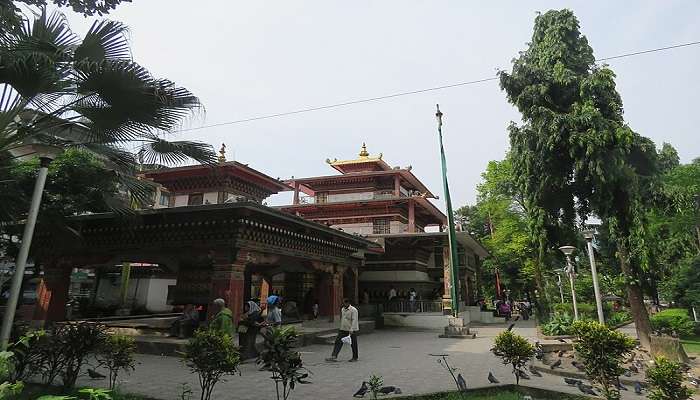
Nestled in the middle of the commercial town of Phuentsholing, there is a beautiful Bhutanese shrine called Zangtopelri Lhakhang. This sacred shrine built in 1990 by Dasho Aku Tongmi, the writer of the Bhutanese national anthem, is a three-storied building representing Guru Rinpoche’s paradise. What sets Zangtopelri apart is its intriguing centrepiece — an old elephant skull found during the construction of the building is said to shower blessings on anyone who looks at it. While pilgrims turn the wheels of prayer and murals tell stories of Bhutanese saints, this temple symbolises faith and architectural beauty that everyone is welcome to discover.
Zangtopelri Lhakhang History
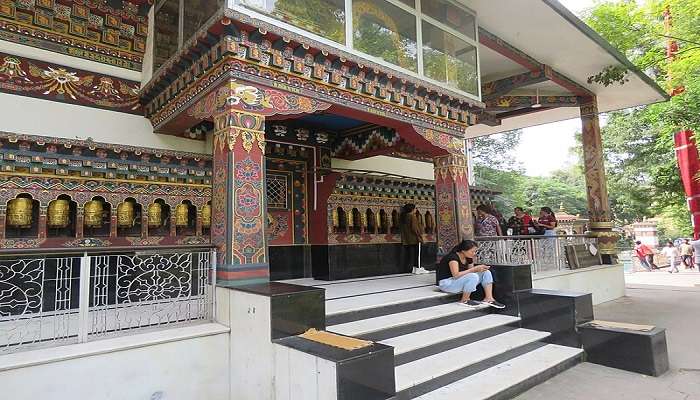
Zangtopelri Lhakhang is a beautiful temple in Phuentsholing with statues and paintings of Guru Rinpoche and Avalokiteshwara. It is said that an elephant skull was discovered when the temple was being built, and it was buried at the site to become a protective emblem. The three-story structure resonates with the chants of Buddha Amitabha and Guru Padmasambhava. In the backdrop of beautiful gardens and the sound of prayer wheels, the monastery’s architecture and paintings tell stories of spiritual and cultural richness.
Must Read: Bhutan Hill Stations
Zangtopelri Lhakhang Timings And Entry Fee
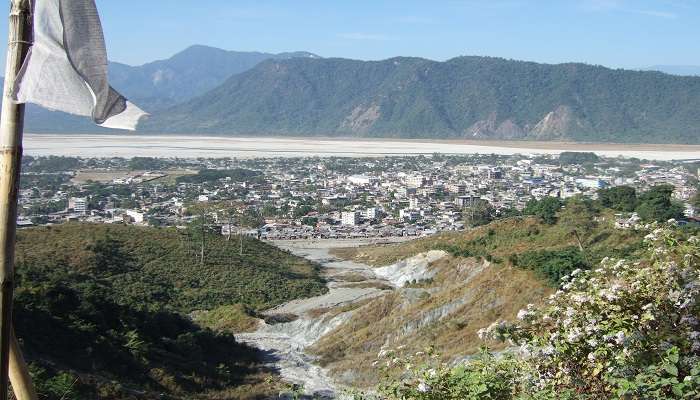
Zangtopelri Lhakhang is open for visitors from 9 in the morning to 6 in the evening every day and is free to the public, thus allowing anyone who wishes to find solace and learn more about the culture. This Buddhist Temple in Phuentsholing offers a serene environment where visitors can experience the tranquillity of the spiritual setting and enjoy complete relaxation.
Best Places To See Around Zangtopelri Lhakhang
Some of the most enchanting destinations surround Zangtopelri Lhakhang Thimphu. The region offers plenty of places to explore from historic monasteries to eye-soothing valleys. These attractions are ideal for spiritual seekers and nature admirers.
1. Tiger’s Nest Monastery (Paro Taktsang)

Tiger’s Nest Monastery or Paro Taktsang is Bhutan’s most famous attraction, located on the cliff 3,000 feet above the Paro Valley. This place is believed to be as old as the 17th century and has many associated legends. There is a story that the second Buddha, Guru Rinpoche, came to this place on the back of a tigress to defeat a local spirit. The trip to the monastery is exciting, with a steep climb and a beautiful view of the valley and the mountains in the distance. After reaching the top, tourists can visit a number of temples with stunning paintings, sculptures, and other religious artefacts, as well as enjoy the atmosphere of the Buddhist temple and the sound of the monks’ chants. Paro Taktsang is quite a physically demanding place to visit but at the same time it is spiritually enriching.
Days Needed: 2 days
Entry Fee: 500 Nu
Suggested Read: Bhutan In Autumn
2. Rinpung Dzong

Rinpung Dzong, which means ‘the fortress on a heap of jewels’ is a magnificent fortress-monastery in Paro. This architectural marvel was constructed in the 17th century and serves dual purposes: It is a monastery and the civil administration headquarters of the Paro district. The dzong is a fine example of Bhutanese architecture with its massive walls, wooden carvings and a succession of courtyards and temples. The annual Paro Tsechu festival is celebrated here and is a major tourist attraction, featuring traditional mask dances and other cultural troupes. Visiting Rinpung Dzong is a great opportunity to get acquainted with the history and culture of Bhutan and enjoy the panorama view of the Paro Valley as the fortress is built on a hill.
Days Needed: 1 day
Entry Fee: 500 Nu (including guide’s fee)
3. Kyichu Lhakhang
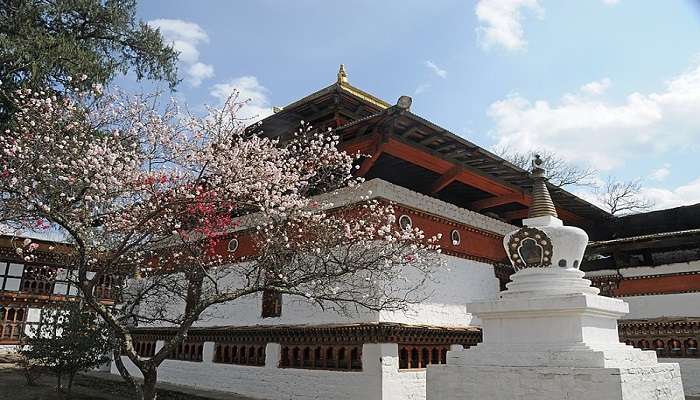
Kyichu Lhakhang is one of the most revered and oldest temples in Bhutan. It was built in the 7th century by the Tibetan King Songtsen Gampo and is one among the 108 temples that are said to have been built to tame a giant demoness. This temple, which is surrounded by a calm environment, gives an insight of the religious background of Bhutan. Inside, there are beautiful murals, statues, and a display of relics that are considered holy. The courtyard has an orange tree which has fruits all year round, giving the temple a magical feel. Kyichu Lhakhang remains an important shrine for the Buddhists of Bhutan and an interesting place of interest for those who want to learn about Bhutan’s religious background.
Days Needed: 1 day
Entry Fee: 200 Nu
Suggested Read: Hiking In Bhutan
4. Chele La Pass
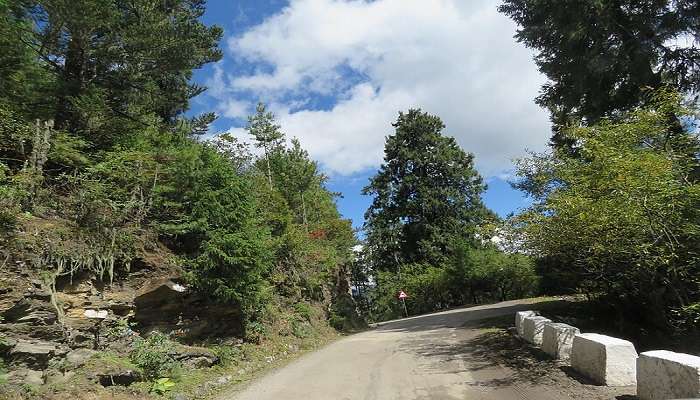
Chele La Pass is the highest motorable point in Bhutan, and it is located at an altitude of 13,075 feet. The pass provides a spectacular view of the Himalayan range and the two prominent mountains of Jomolhari and Jichu Drake. The journey to Chele La is quite an experience as the road passes through thick forests of pine and rhododendron trees. When one gets to the pass, many colourful flags are tied to the ground and to each other, and they sway in the wind as a sign of peace and goodwill. It is ideal for hiking, bird watching and taking photographs. During spring, the area is covered with blooming rhododendrons, which makes the place a paradise for nature lovers.
Days Needed: 2 days
Entry Fee: Free entry
5. Drukgyel Dzong
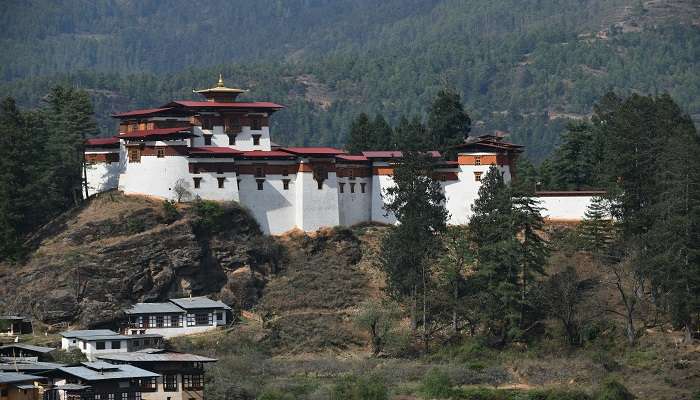
Drukgyel Dzong is a fortress built in 1649 in the upper Paro Valley to commemorate the Bhutanese victory over the Tibetans. This fortress was partially burnt down in the 1950s, but the remnants of the fortress still exist to tell the story of the Bhutanese spirit. It has been restored to some extent, and its historical and architectural value has been well maintained. Tourists can walk around the area and see the remaining parts of the buildings and the victories won on this territory. The place has an excellent view of the surrounding mountains and on a clear day, one can see Mount Jomolhari. The best time to visit Drukgyel Dzong is early in the morning or in the evening when the colours of the building and the surrounding nature are most vivid.
Days Needed: 1 day
Entry Fee: Free entry
Suggested Read: Paragliding In Bhutan
How To Reach
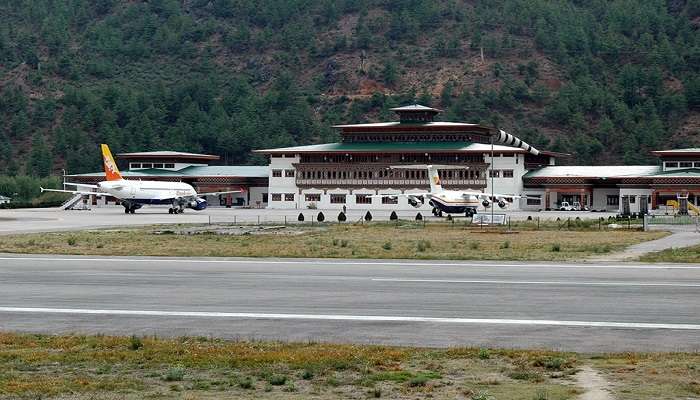
By Air
The nearest airport is Bagdogra Airport. From there, a picturesque 162. A 8 km drive through National Highway 17 leads you to Phuentsholing.
By Road
Phuentsholing is easily accessible by road from major cities in India and Bhutan by private car or bus. The nearest cities are Chhukha and Samtse in Bhutan and Falakata, AlipurDuar, and Dhupgari in India.
By Rail
The nearest railhead is New Jalpaiguri Railway Station. Taxis are available from the station for the onward journey to Phuentsholing.
Further Read: Tourist Places In Bhutan
A visit to Zangtopelri Lhakhang is a journey to the very core of the Bhutanese religious and cultural experience. Visiting this place is truly rewarding whether you are an architecture lover or a religious pilgrim. If you are planning a trip to Bhutan then make sure to include Zangtopelri in your itinerary. This sacred temple, with its eye-catching carvings, serene surroundings, and profound spiritual ambiance will rejuvenate your senses.
For our editorial codes of conduct and copyright disclaimer, please click here.
Cover Image Source: Vinayaraj for Wikimedia Commons
Frequently Asked Questions About Zangtopelri
Are photographs allowed in Zangtopelri Lhakhang?
Yes, photography for personal use is allowed inside the monastery's compound.
What is the meaning of the elephant skull depicted near the Zangtopelri Lhakhang temple?
The elephant skull which is said to have been discovered when constructing the monastery, is of cultural and historical value.
Is there any restriction on the type of dress one should wear while visiting Zangtopelri Lhakhang?
It is recommended that visitors dress appropriately, especially when it comes to clothing, due to the religious nature of the site.
Is Zangtopelri Lhakhang open during festivals?
Yes, the monastery is open during the major Buddhist festivals to provide a glimpse of Bhutanese festivals.
Is Zangtopelri Lhakhang friendly to wheelchairs?
Yes, the facilities in the monastery are fully accessible to the physically challenged and other disabled persons.
People Also Read:
Chimi Lhakhang Stakna Monastery Shashur Monastery

Get ready to wander the world through amazing visual tours that we provide via our blogs and stories. As a content writer, I love sharing incredible travel experiences that inspire readers to plan their own adventures and create unforgettable memories. From planning to execution, everything has already been served in these amusing tales. Let’s explore the world together, one destination at a time!











